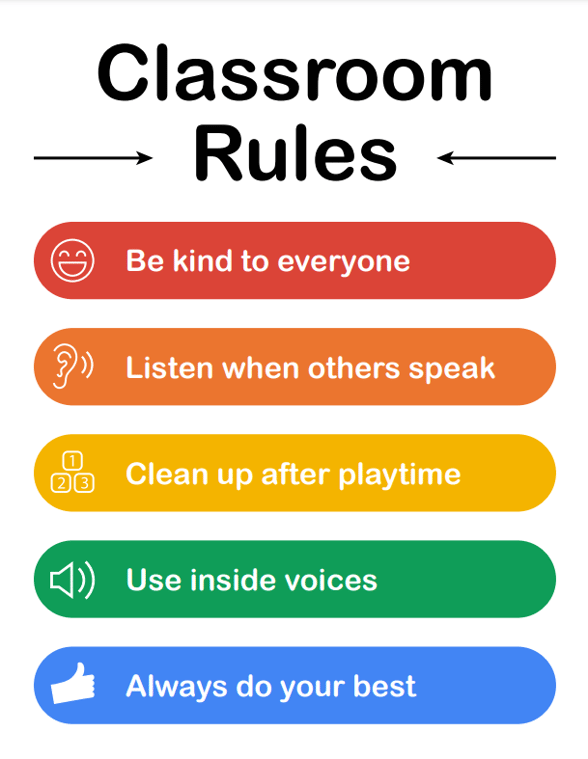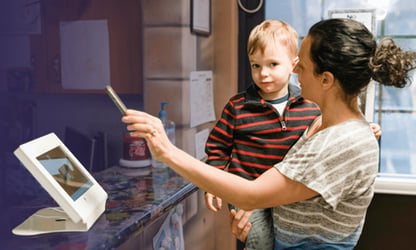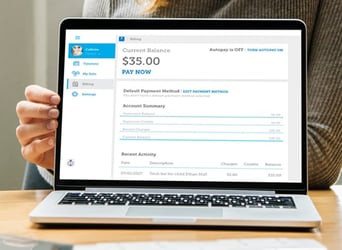Are you a preschool teacher looking to create a harmonious, structured and productive learning environment for your young students? Establishing clear rules is the foundation for effective classroom management and positive child development. In this comprehensive guide, we'll walk you through the process of creating and implementing preschool classroom rules that promote safety, respect and engagement. Discover the secrets to crafting rules that stick, using visual aids and enforcing them consistently. Empower your preschoolers to thrive in a nurturing, well-organized classroom setting. Let's dive in and unlock the power of effective classroom rules!
For more information on child care management, check out this daycare organizational chart!
Table of Contents
- Importance of Setting Up Rules in a Preschool Environment
- What Do You Need to Consider When Developing Rules for a Preschool Classroom?
- What Are Some Classroom Rules for Pre-K?
- How to Teach Classroom Rules to Preschoolers
- Free Printable Classroom Rules
- Enforcing and Reinforcing Rules
Importance of Setting Up Rules in a Preschool Environment

According to Zero to Thrive, "Routines help children feel safe and secure because they know what to expect. When children feel secure, they are more willing to explore their environment and build positive relationships." Similarly, the Early Childhood Learning & Knowledge Center (ECLKC) emphasizes that "familiar activities can provide comfort for both adults and children during challenging and uncertain times."
Here are a few additional reasons you need to set up classroom rules for preschool to achieve success:
- Rules will help provide a sense of security and stability for children, making them feel safe and confident in their surroundings.
- Clear expectations and boundaries guide children's behavior, promoting self-regulation and reducing conflicts.
- Consistently enforced rules help children develop a sense of responsibility and respect for others.
- A well-structured classroom environment allows children to focus on learning and exploration.
What Do You Need to Consider When Developing Rules for a Preschool Classroom?

Differences Between Rules and Expectations
Before diving into the specifics of creating classroom rules, it's essential to understand the distinction between rules and expectations.
| Rules | Expectations |
|---|---|
| Concrete do's and don'ts | Broader behavioral goals |
| Specific actions or behaviors | General attitudes and values |
| Example: "Walk inside the classroom" | Example: "Be respectful to others" |
The Six Most Important Aspects of Effective Classroom Rule Creation
1. Keep It Simple and Clear
Imagine you're talking to a room full of eager preschoolers. Most preschoolers are still new to structured situations, so your guidelines need to be as straightforward as possible so they can follow classroom rules and remember them. Use words that are easy to understand, ensuring that even the youngest kids can grasp what you're saying.
2. Safety Comes First
The top priority is to keep the kids safe and sound, both physically and emotionally. This means setting rules like not running inside the building and reminding everyone to keep their hands to themselves. Also, it's important to teach children to use toys and other classroom items correctly to avoid any mishaps.
3. Focus on the Positive
Kids respond better to what they should do, rather than what they shouldn't. Instead of saying, "Don't run," try "Let's walk inside." Use positive phrasing to encourage the right behavior without sounding too strict.
4. Get the Kids Involved
When kids take an active role in making the rules, they're more likely to follow them. It gives them a sense of ownership and makes them feel proud to abide by the guidelines they helped create.
5. Respect for All
Every child is unique and comes from a different background. Rules need to be inclusive and honor each child's cultural roots and individual needs. This way, every kid feels valued and respected in the group.
6. Be Ready to Adapt
Just like seasons change, so do the dynamics of a group of children. Be open to modifying the rules if you see that something isn't working or if it doesn't meet the needs of all the kids. Flexibility is key to creating an environment where every child can thrive.
How Many Rules Should a Preschool Classroom Have?
When it comes to the number of classroom rules, less is often more. Considering the age and attention span of preschoolers, it's best to keep the list of rules concise and manageable. According to a lesson on Study.com, five rules or fewer is the optimal number for preschool classrooms. This allows children to easily remember and understand the expectations without feeling overwhelmed.
What Are Some Classroom Rules for Pre-K?

Here are some examples of simple, clear rules that are suitable for preschoolers and set the tone for your school and classroom:
- Be kind to others.
- Listen when someone is talking.
- Use walking feet indoors.
- Keep your hands and feet to yourself.
- Clean up after yourself.
Let's take a closer look at each rule to see what it encompasses and how it can be applied to preschool children.
1. Be kind to others
- Explanation: This rule encompasses a wide range of prosocial behaviors, such as sharing, patience, taking turns, using gentle touches and speaking kindly to peers and teachers.
- Example: We use friendly words and actions in our classroom. If you want to play with a toy that someone else is using, ask politely and wait for your turn.
2. Listen when someone is talking
- Explanation: Encouraging active listening skills helps children develop respect for others, improve their ability to communicate and foster a sense of community in the classroom.
- Example: When a friend or teacher is speaking, we show respect by looking at them, staying quiet and thinking about what they are saying. This helps us learn and understand each other better.
3. Use walking feet indoors
- Explanation: Emphasizing the importance of walking indoors promotes safety, reduces the risk of accidents and helps maintain a calm and orderly classroom environment.
- Example: In our classroom, we use walking feet to move around safely. Running is for outside play time. When we walk, we're less likely to bump into others or fall and get hurt.
4. Keep your hands and feet to yourself
- Explanation: This rule promotes physical boundaries, respect for personal space and gentle interactions among children.
- Example: We show respect for our friends by keeping our hands and feet to ourselves. This means no hitting, kicking or pushing. If you feel upset with someone, use your words to express your feelings or ask a teacher for help.
5. Clean up after yourself
- Explanation: Encouraging children to clean up after themselves fosters a sense of responsibility, promotes organization and teaches the importance of caring for shared spaces and materials.
- Example: In our classroom, we all work together to keep our space tidy. When you finish playing with a toy or doing an activity, put the materials back where they belong. This shows respect for our classroom and makes it easier for others to find and use the items they need.
How to Teach Classroom Rules to Preschoolers
Implementing Positive Phrasing and Corresponding Visuals in Rule Communication
When teaching classroom rules to preschoolers, it's essential to use positive language that emphasizes desired behaviors rather than focusing on what not to do. For example, instead of using "Don't shout," try phrasing the rule as "Use inside voices." Accompany each rule with a corresponding visual that illustrates the expected behavior, such as a picture of a child speaking softly. This combination of positive phrasing and visual aids reinforces the message and makes it easier for young children to understand and remember the rules.
Modeling the Rules and Active Role of Teachers in Rule Enforcement
As a preschool teacher, you play a crucial role in modeling the behavior you expect from your students. Children learn by observing and imitating the adults around them, so consistently demonstrating classroom rules is essential. For example, if one of your rules is "Use walking feet indoors," make sure you walk calmly and quietly in the classroom yourself.
When you witness children following the rules, acknowledge their efforts with specific praise, such as, "I noticed how gently you put away the blocks, Ashley. Great job following our cleanup rule!" This example of positive reinforcement not only helps Ashley to internalize that behavior as a port of her routine, but it also effectively models that behavior to every other student.
If you're looking for positive reinforcement tools to help model good behavior that are simple enough for young children, these are effective strategies.
- Verbal praise: "Great job walking quietly to the bathroom, Liam!"
- Nonverbal cues: A thumbs-up, a smile or a gentle pat on the back
- Tangible rewards: Stickers, stamps or small tokens that children can collect and exchange for privileges or special activities
- Group rewards: Earning a class-wide celebration or extra playtime for collective good behavior
Using Chants, Rhymes and Engaging Activities to Make Rules Memorable
Incorporating chants, rhymes and interactive activities can make learning and remembering classroom rules fun and engaging for preschoolers. Create simple, catchy phrases that encapsulate each rule, such as, "Walking feet keep us safe, running feet have to wait!" Teach these chants to your students and recite them together regularly, especially during transitions or when reminding children of expectations. You can also develop short songs that reinforce the rules, encouraging children to sing along and perform the accompanying actions.
Free Printable Classroom Rules
Where to Find Preschool Classroom Rules Printables
If you're looking for ready-made printable rules to save time, Vanco has you covered. As part of our mission to support preschools and streamline their operations with our preschool management software, we've created free printable classroom rules posters. These resources are designed to help educators quickly and easily implement visually appealing rule displays in their classrooms, allowing them to focus on what matters most – nurturing and guiding their young students. And charts with printed and/or visual rules help young children to remember the rules.
How to Create Visual Representations of Rules for Preschoolers
Creating eye-catching and engaging visual representations of classroom rules is easier than you might think. With user-friendly graphic design tools like Canva, you can easily design professional-looking posters for free. Check out this YouTube video to see how it's done.
Educators can sign up for a free Canva account and access a wide range of templates, illustrations and design elements to create custom classroom rule posters that align with their unique teaching styles and classroom themes. Visit this page to sign up for your account. If you're unsure about your eligibility, you can view their eligibility guidelines for educator accounts here. Here's how you can get started with your Canva for educators account.
Enforcing and Reinforcing Rules
The Importance of Consistent Enforcement of Rules for Preschoolers
As the Centers for Disease Control and Prevention (CDC) states, "Consistent follow-through with consequences when rules are broken help your child have a clear understanding about the importance of rules." By consistently enforcing the rules and applying appropriate consequences when necessary, you help children internalize the expectations and rules for preschool develop self-regulation skills.
Age-Appropriate Responses to Encourage Good Behavior
When responding to misbehavior or encouraging good behavior, it's crucial to use age-appropriate strategies that align with preschoolers' developmental stages. Some alternatives to traditional disciplinary actions include:
- Redirecting children's attention to a positive activity or behavior
- Offering choices to give children a sense of control and encourage decision-making skills
- Implementing a "Calm Down" area where children can take a break and regain emotional control
- Using "I" statements to express your feelings and model effective communication
- Encouraging children to identify and express their emotions, promoting emotional intelligence
Focus on strategies that promote self-regulation, empathy and problem-solving skills, laying the foundation for long-term social and emotional development.
Involving Parents with Rule Enforcement
To create a cohesive approach to rule enforcement, involve parents in the process. Share the classroom rules with families and explain their importance in establishing a positive learning environment. Encourage parents to reinforce these rules and expectations at home, providing consistency between the classroom and home settings. Regular communication with parents about their child's behavior, both positive and challenging, helps foster a strong partnership and ensures that everyone is working together to support the child's growth and development.
Get 100+ Editable and Printable Templates for Almost Every Preschool Situation
We know preschools like yours are busy. That's why we made dozens of templates to help you manage the various aspects of your organization. With billing and invoicing, activity templates, forms and even marketing materials, we have it all. Download all 100 today!
The helpful resources for your child care center don't end here - check out this blog on daycare vs preschool for more assistance.











